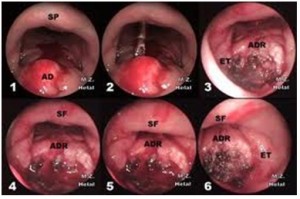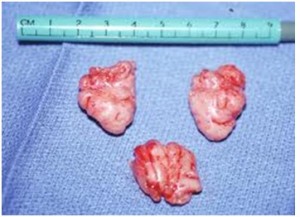Adenoidectomy refers to the surgery undertaken for the removal or extirpation of the adenoid glands.
The Basics Behind Adenoidectomy
Adenoids and tonsils are nothing but clumps of lymphoid tissue and whereas adenoids lie between the air passage (the nasal path) and the rare portion of the throat, tonsils are situated inside the mouth. Children are the main patients on whom most adenoidectomy surgeries are performed.

Why Should You Opt For Adenoidectomy?
An adenoid removal surgery is performed due a number of causes associated with adenoid infections as well as contagious defilement of the tonsils. In children, tonsils as well as adenoids are associated with protection of the body against the influx of bacterial and viral infections that tend to percolate into the body through open areas of the nose and the mouth by the creation of antibodies.
This is more prominent between the age group of 2 to 6, as children of this age often suffer from acute cases of swollen adenoids, leading to breathing problems. With age, as you enter adulthood, the role of adenoids in regulating your health dwindles and they often disappear.
This is the reason why pediatric adenoidectomy is more popular than adult surgeries for adenoid removal. The purpose of performing adenoidectomy on children can be enumerated as below:
- Similar to cases of enlarged tonsils, infected and inflamed adenoids can cause difficulty in the breathing, ear infections and the like.
- The inflammation of the adenoids often obstructs the passage of the Eustachian Tubes which are responsible for bridging the rare part of the throat and the ears. This can cause hindrances in proper hearing and this can last till the issue is resolved.
- Treatment of infected and enlarged tonsils is also followed by adenoid removal, and vice versa, since the two types of cells bear close resemblance to each other and are intricately associated.
When Should You Go for an Adenoidectomy?
Identifying adenoid related problems can often turn out to be a baffling job, since most general physicians tend to associate the symptoms of adenoidectomy to those of tonsil issues. Tonsilitis causes and symptoms are often related to problems with the adenoid. Although the two are closely connected, there are some differences between the two. You can suspect that your child might be in need of an adenoidectomy if you witness any of the signs elucidated below.
- Faces difficulty in breathing via the nasal passage
- Snores abnormally while sleeping
- Displays pauses or interruptions in breathing while sleeping (which is also termed as sleep apnea)
- Ear infections turn chronic and result in frequent absence from school and never get cured even after dosages of antibiotic treatments
Such infections that are caused by inflamed adenoids occur as many as five times or more in the span of a year, and can be detected by a timely and proper adenoid diagnosis.
Pediatric adenoidectomy has come up with highly successful results. A majority of children who undergo adenoidectomy start breathing without any difficulty through the nasal passageway and suffer less from sore throats or ear infections. Only a few suffer from adenoid problems related to the procedure, and these can be identified when the child is under observation after a tonsil and adenoid removal. Adenoid tissue re-growth is not a common phenomenon and if it occurs, the reason can be attributed to incomplete adenoid removal during the surgery.
